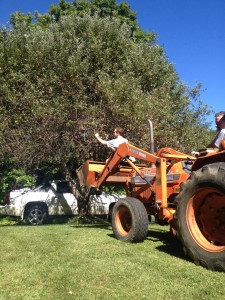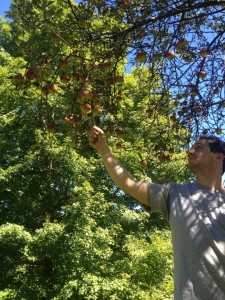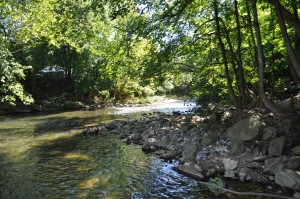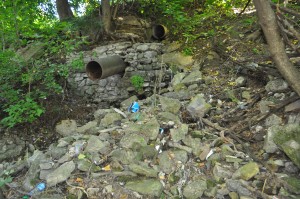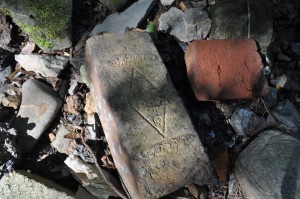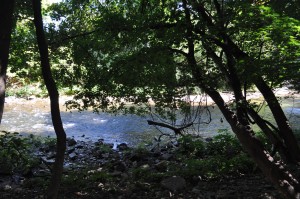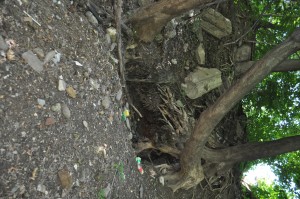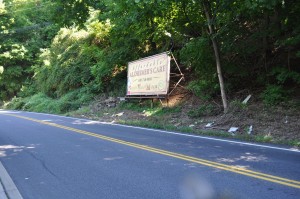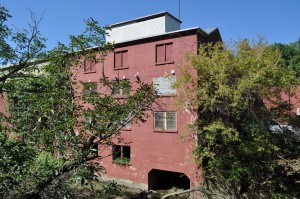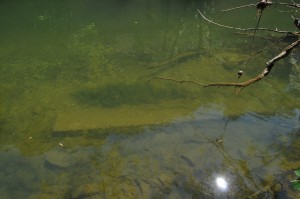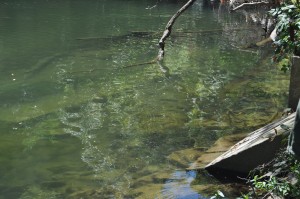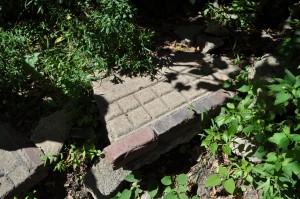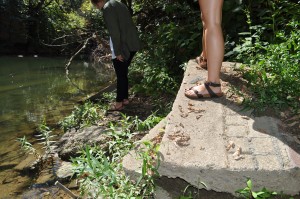This past weekend, I went up to Ridgefield, CT, the hometown of my boyfriend, Jesse. I’ve always loved his town, house, and the property on which his house sits. As I said in class, his house is a barn built sometime in the late 1700’s in upstate NY which was picked up piece by piece and moved to Ridgefield, CT by some guy who eventually sold it to Jesse’s parents in the early ’90’s. Although his house includes all modern conveniences, it reminds me a bit of Thoreau’s house. Jesse’s house is also made entirely from wood, near a pond, a few miles from the nearest town (there aren’t really even any neighborhoods in this area, just a house every few acres), and is surrounded a thriving ecosystem which can truly breathe life into whomever lets it.
I had the unique and wonderful opportunity this past weekend to take part in the most bountiful harvest of the two massive apple trees that sit behind Jesse’s house yet. According to Jesse’s parents, this fall has yielded the most amount of apples with the highest quality (large, round, without wormholes). We climbed up on ladders to pick the apples, but then Jesse’s dad brought his backhoe around to the tree, put Jesse up in the bucket, thus increasing the range of apple picking. Throughout the rest of the day, we grinned apples into pulp and pressed them to make cider, we cut them into slivers to bake into apple crisp, and we cooked them down and used a device to create apple sauce. It’s a truly amazing experience when you can follow a food from harvest to processing to consumption all in one day.
There was something truly special and refreshing about yesterday. I don’t think it was solely from the apples. It was because I got to roll around in the grass unbothered by a bustling campus around me. It was because I was energized by the change of the seasons which was far more present there than here in Easton. Thoreau may have been whispering in my ear while I was imbibing the crisp air, apple smells, and gnats around me: “There can be no very black melancholy to him who lives in the midst of Nature and has his senses still” (141). It’s true. A lot of things could have bothered me yesterday. I could have easily felt an urgency to get back on campus to get ahead on homework. I could have mourned the end of summer and all of my summer goals left unaccomplished. Although sometimes Thoreau is contradictory or purposefully abrasive, a lot of the times, he’s simply and honestly correct. Many of my friends have pointed down at “Walden” while I have it out in the library or elsewhere and said something along the lines of “Ah, Walden. Great isn’t it?” Not as many people would say that if the key thing they took from it was his prickles and irony. People say that because this work of art has spoken serious truth to them that they cannot dispute and, hopefully, try to fold into their everyday lives. I know that’s how I feel about “Walden” thus far and I cannot wait to get to the point where a piece of “Walden” is relevant to every day of my life. Guess I have to read the rest of it!

